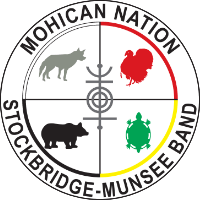Section SAF.02.17 — Nuisance Prohibited
(a) "Public nuisance" refers to acts or omissions that are an unreasonable, significant interference:
(1) with the rights of the tribal community to the free use of public property;
(2) with community standards of public health, public safety, public peace, public comfort or public convenience; or
(3) that in any way renders other persons insecure in life or the use of property or tends to depreciate the value of property of others.
(b) Individuals are prohibited from any act or omission that constitutes a public nuisance. The following is a non-exclusive list of actions that may constitute a public nuisance.
(1) Allowing unlicensed, inoperable, disassembled, junked, or wrecked vehicles and/or scrap material or related items to be stored or remain in an area that does not have a permit to operate as a junkyard/recycling center or for auto repair in accordance with Chapter PRP.02.
(2) Failing to maintain yard and/or land assignment in safe and/or orderly condition.
(A) Allowing scrap, salvage, tires, refuse, or goods to accumulate in areas that are open to the elements so as to create areas that are unsightly and/or contribute to health and safety hazards.
(B) Failing to keep waste or garbage in an enclosed building or properly contained in a closed container designed for such purposes.
(C) Allowing vegetation to be a hazard to persons or property.
(3) Failing to maintain a structure and/or infrastructure in a safe and sanitary condition.
(A) Structure that is not maintained to avoid deterioration or decay. This includes the failure to maintain windows, doors, siding, roof, steps, decks, walkways and other components.
(B) Failure to maintain a secure building envelope.
(C) Failure to maintain adequate ventilation, sanitation or plumbing facilities.
(D) Structure that is in a condition that constitutes a fire hazard.
(E) Structure where there is hoarding or the accumulation of excessive goods as to become a health and/or safety hazard.
(4) Using property in a way that attracts violence and the threat of violence or that facilitates illegal activity, such as the drug trade or gang activity.
(5) Allowing physical hazards that are dangerous to children, including, but not limited to, abandoned or neglected equipment, pools, refrigerators, holes, excavations or rubble.
(6) Allowing wells to remain in place unsealed and/or unsecured.
(7) Allowing oil, toxic or noxious materials to discharge into the environment.
(8) Maintaining an excessive number of animals on premises.
(9) Allowing decayed animal or vegetable matter, trash, rubbish, bedding, packing material, or any material in which disease-carrying insects, rats or other vermin can breed, live, nest or seek shelter (exempting private compost piles and normal farm operations) to be in place.
(c) Process to Address Public Nuisances.
(1) The Tribe will identify a public nuisance. This identification can be based on a complaint from the public or can be initiated by tribal personnel.
(2) Once a public nuisance has been identified, the Tribe shall provide written notice of the public nuisance to the individual responsible for the public nuisance and/or the person responsible for the land where the public nuisance is located (e.g., the land assignment holder, occupant or other person controlling the land). If the person responsible for the public nuisance is unknown, then the notice shall be posted at the site of the public nuisance.
(A) The written notice shall contain a description of the public nuisance, the location of the public nuisance and provide an opportunity to cure within 21 days.
(B) For purposes of this section, curing a public nuisance means to either completely abate the nuisance or to prepare a remediation plan, which is acceptable to the Tribe, for abating the nuisance within an identified timeframe.
(C) The notice shall be signed and dated by the person issuing the notice on the behalf of the Tribe.
(D) This notice and opportunity to cure is waived in the event the public nuisance is a serious threat to life or limb or may result in irreparable injury, loss or damage to persons, community infrastructure or the environment.
(3) In the event that a public nuisance is not cured or in the event the right to cure is waived, then a tribal officer or conservation officer may issue a citation for a public nuisance violation against the individual responsible for the public nuisance and/or the person responsible for the land where the public nuisance is located.
(d) In the event the Court finds that there is a public nuisance, the Tribe may take such actions as are necessary and appropriate to recover damages and abate the public nuisance. Such actions may include, but are not limited to, obtaining an injunction to prevent a public nuisance from occurring. The individual responsible for the public nuisance shall be responsible for the costs to abate the public nuisance, as well as any fines levied under this ordinance.
